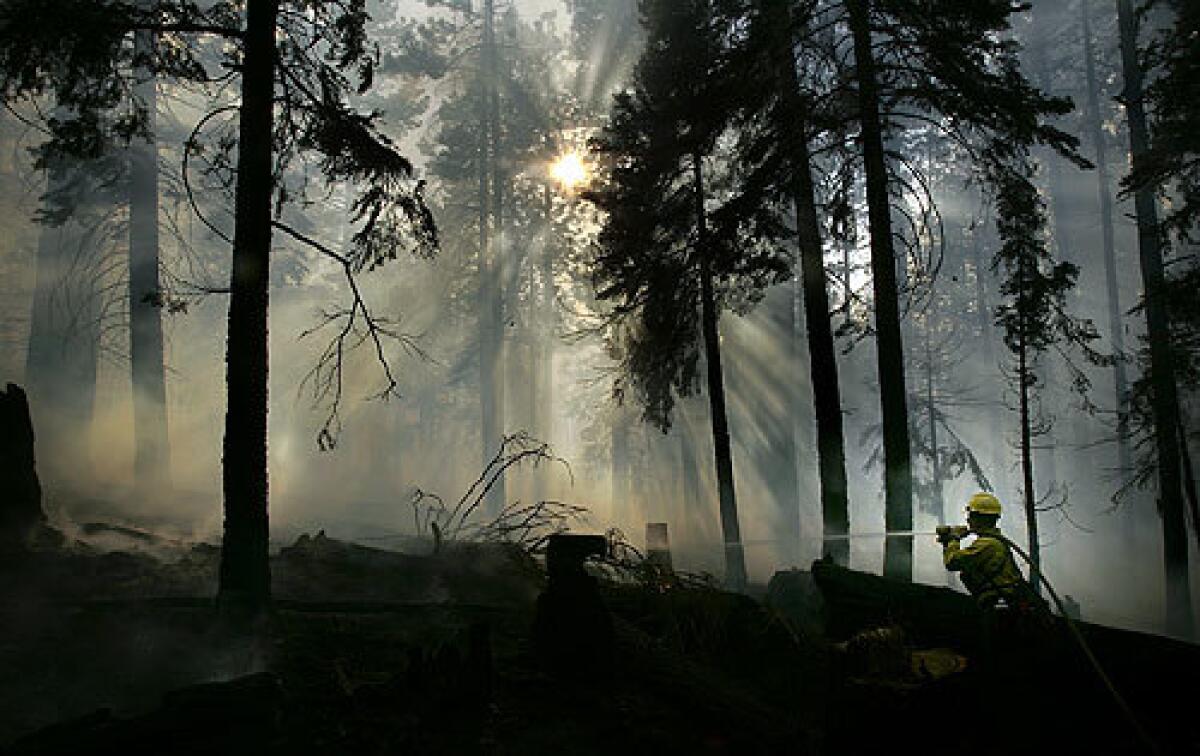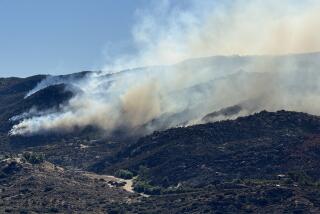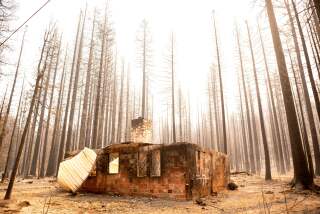Tahoe fire shows cost of paradise still rising

Sacramento — ANOTHER natural disaster, another lesson. But not the predictable lesson.
Not the tired, nagging lecture about people who insist on living in the trees and on the bluffs, at the edge of the surf and along the riverbanks, asking for what they get.
That situation’s not going to change, no matter the finger-wagging. People are too drawn to the beauty and the lifestyles. There’s too much money to be made by developers. And too many campaign dollars to be paid politicians who make decisions on land use.
No, the lesson from the Tahoe wildfire is this: There’s no economy in numbers because of an exploding population — no growth discount for taxpayers funding the services they need.
It’s precisely the opposite: The more people we cram into California — not just beneath the pines and along the waterfronts, but into the comfy suburbs and struggling inner cities — the more it’s going to cost each of us. Cost us not only to retain some semblance of the California lifestyle, but often to survive. There’s a premium to be paid for living here, and it keeps rising.
Fifty years ago at Tahoe, when I first started vacationing there, the urban area that just erupted in flames off the south end of the lake was practically a wilderness. There was a dirt road. It was wooded and undeveloped. It’s still wooded, but populated with very expensive homes — or was until Sunday.
If some hiker had dropped a cigarette butt and burned a few acres back then, it would have been smoky, but not devastating. With thousands of people living there, it becomes a natural disaster and a multimillion-dollar firefighting and cleanup job for government.
Who pays? Not just the neighborhood. All Californians do. And so do the feds.
State Sen. Sheila Kuehl (D-Santa Monica) got a bill passed three years ago that required homeowners in wildfire-threatened areas to thin trees and brush within 100 feet of their houses. But the law is largely ignored. There isn’t much government enforcement. Moreover, to obtain a tree-cutting permit often requires a frustrating venture into the bureaucratic bush. And paying someone to take down a tall pine can cost $1,000.
There need to be more government enforcers and permit-expediters. Maybe also government grants to help homeowners pay for tree removal. Sacramento used to have such a program, but it was felled in a budget crunch.
In the last 10 years — since President Clinton held a “save Lake Tahoe” summit — the feds have thinned 12,700 acres of national forest and have plans for 37,000 more.
All this costs tax money — local, state and federal — and funds are scarce.
Here is one example of how ridiculous our tax system is:
My wife and I are partners with some other people in a condo on Tahoe’s north shore. Because the place has been, for tax purposes, under the same ownership for decades, our property tax bite is a laugher: only one-seventh of our neighbor’s, who bought his condo just last year. Mind you, ours isn’t even a personal residence. It’s a vacation retreat.
A lot of us aren’t paying our fair share, especially we who live in tinderboxes.
Preventing and suppressing wildfires is just one government expense that increases for each Californian as the population grows.
We also have to pay for water supply and flood protection. The water gets harder and more expensive to find; people keep crowding into flood plains near leaky levees. Because all this is so pricey, we have to borrow at double the cost, counting interest.
Never mind natural disasters. Just packing people into densely populated areas causes problems.
I call this the chicken coop syndrome, observed as a boy while growing up on a small citrus ranch in Ojai. The more chickens we’d cram into the coop, the more they’d act up, compete, fight. That’s nature. And it’s human nature.
It requires big bucks for gang suppression — and also for locking up bad guys in separate pens. Isolating criminals is something the public favors in concept, but doesn’t want to pay for with higher taxes.
Just getting people into crowded cities for work requires increasingly more tax dollars to build longer, wider freeways — or improving rapid transit. Either way, it’s public money.
The more people there are, the heavier each Californian’s tax burden. But don’t accept my word. Look at history:
In 1950, when California’s population was almost 11 million, state spending per $100 of personal income was roughly $5, according to the state Department of Finance. In 1975, when there were about 22 million of us, state spending amounted to $7.50 per $100 of income. Today, with 37 million Californians, Sacramento is spending $9.60.
There doesn’t seem to be much clamor from the public for cutting back on any specific service.
Just one more personal illustration: Back when there were 15 million Californians, my registration fees at San Jose State ran $55 per year. Today, students there pay $2,772. At the University of California, it’s $6,571. The population boom certainly has been costing students.
But we can have it all — the mountain paradises, affordable universities, civilized commutes — if we’re willing to pay, which is something anti-tax Gov. Arnold Schwarzenegger doesn’t want to hear.
“We’re not going to stop growth, nor should we,” says state Sen. Darrell Steinberg (D-Sacramento), chairman of the Natural Resources and Water Committee. “What’s really wrong is that there’s a huge disconnect between what we say we want and our willingness to have an honest discussion about how to pay for it. If I were to sum up, that’s the single biggest issue facing not only government but society.
“Everybody thinks somebody else should take care of it.”
Somebody better knock down some pine trees.
--
george.skelton@latimes.com
More to Read
Start your day right
Sign up for Essential California for news, features and recommendations from the L.A. Times and beyond in your inbox six days a week.
You may occasionally receive promotional content from the Los Angeles Times.






